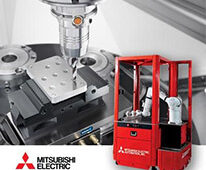Over the past couple years, safety regulations in the U.S. have undergone a dramatic shift. National Consensus Standards, such as ANSI, are putting more emphasis on risk assessment for equipment manufacturers, equipment modifiers and in some cases, the end user. It is expected that future revisions of such standards will require more and more risk assessments be performed by end users. According to some current standards the end users may also be considered equipment modifiers.

“This puts more onus on the end user,” says Jim Washam, a safety specialist for Machine Safety Specialists of Columbus, Ohio. “That’s important, since in some cases OSHA could use such standards as evidence of recognized industry hazards which are enforceable under OSHA’s 5 (a) (1) General Duty Clause”.
“This new focus on risk assessment by end users as well as equipment manufacturers and equipment modifiers should greatly improve safety since in many cases the equipment manufacturers may not know what the end user may do to implement the equipment into their production operation,” says Brian Huber, a safety specialist at Machine Safety Specialists.
Those standards are also expected to bring a new spirit of realism. Regulators no longer feel that every cause of injury can be eliminated. “OSHA realizes that people can’t eliminate everything, they can just get to an acceptable level of risk. Now they say that’s the way to go,” Washam says.
ANSI’s new focus makes risk assessment a bigger part of safety. The technique goes through a process of studying the risks associated with a machine or system, then eliminating those risks with safety products or techniques. High levels of safety are achieved by running through a few cycles, analyzing and removing risks, then running the improved system through another round of risk assessment.
This approach reduces the possibility of accidents without driving up cost or complexity. The alternative is to add protective safeguards to every machine to protect against every possible accident. In most factories, adding these protective layers can quickly drive costs sky high.
“You can guard the machine to the full extent if you’ve only got a few machines, but that gets expensive if you’ve got a lot of equipment. If you perform a risk assessment, you may only have to do half as much,” Huber says.
That doesn’t mean that safety is reduced. OSHA executives may be more realistic, but they are still in the business of improving worker safety. Making end users more accountable for addressing safety when they modify equipment is a way to further reduce injuries.
While ANSI’s new focus is moving to end users, that doesn’t absolve OEMs from responsibility. They still have to comply with other safety regulations, and the risk of litigation is always a factor in the U.S.
“OSHA does not have the jurisdiction to hold OEMs responsible,” Washam says. “But if OEMs don’t make products that meet ANSI requirements for safety, they’re leaving themselves open to a lot of lawsuits.”
One thing that won’t change is the regulators’ demand for paperwork. Regardless of who’s devising and deploying safety techniques, well-maintained records will be an important facet of any job. “If you don’t document what you do, you haven’t done it,” Washam says.
Though the OSHA changes went into effect in mid-2006, they’re still very new to many people. Seeking out safety regulations and deciphering them aren’t high on the to-do list for many manufacturers.
It’s probably going to take a long time before the requirements are met at a number of plants. “We still see people who haven’t yet done things described in the 1999 standards,” Washam says.
Once end users learn about the new requirements, there’s a likelihood that many of them will freeze up rather than to dig in to figure out their role in the new focus on safety. “There’s always the danger that people will start dragging their feet because they don’t know what to do,” Huber states.
Regardless of whether managers move their feet on their own or after OSHA suggests they start moving, they will need to pull together a small team. Addressing this expanded scope will require a group effort. Just as equipment designers involve many types of engineers to address all aspects of safety, plant floor managers will have to put together a team to develop a comprehensive solution. “Risk assessment is not a one-person deal. You want to get different groups involved,” Washam says.
Most companies will probably begin by involving engineers and safety personnel, but the team shouldn’t end there. “I maintain you need to include four disciplines: operators, maintenance personnel, control engineers and safety personnel,” Huber says.
Operators can provide input on how they interact physically with different parts of the machine, as well as how the techniques they use to run the equipment at the fastest rate. On the other hand, maintenance personnel know ways to slow the machine down so they can see what’s going on.
Getting a range of input also helps ensure that the selected safety plan will be followed routinely. “If operators and maintenance people aren’t involved, they won’t buy into the program, which can cause big problems,” Washam says.
::Design World::
Filed Under: Factory automation, INDUSTRIAL SAFETY SYSTEMS





Tell Us What You Think!